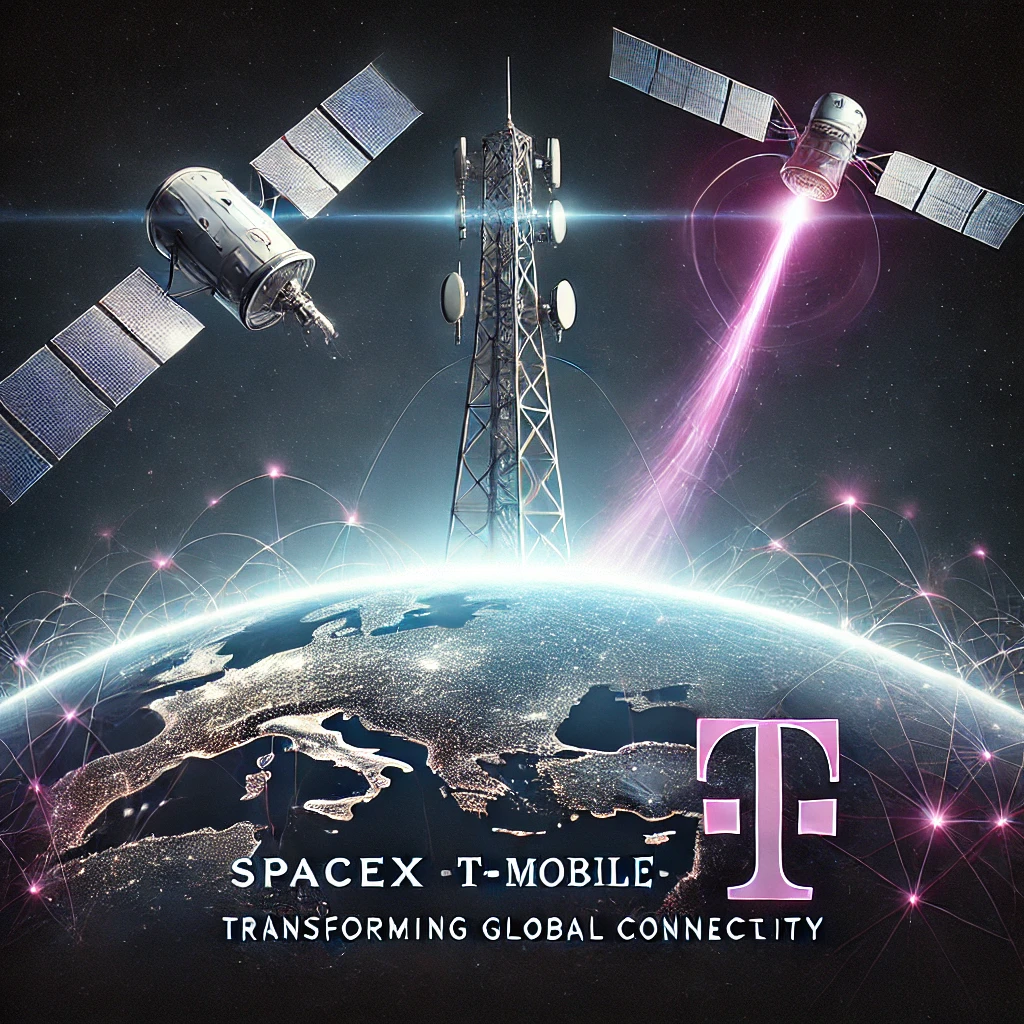SpaceX TMobilePeterson: Pioneering Global Connectivity Solutions
In today’s hyper-connected world, ensuring seamless communication across all regions is more crucial than ever. Enter spacex tmobilepeterson, a groundbreaking partnership between SpaceX, T-Mobile, and Peterson, set to revolutionise global connectivity. This collaboration aims to eliminate mobile dead zones worldwide, leveraging advanced satellite technology and extensive telecom infrastructure to bring reliable mobile services to even the most remote corners of the globe.
1. Introduction to the Partnership
The spacex tmobilepeterson partnership marks a significant milestone in the telecommunications industry. By combining SpaceX’s cutting-edge Starlink satellite network with T-Mobile’s expansive customer base and existing infrastructure, alongside Peterson’s strategic expertise, the collaboration seeks to provide universal mobile coverage. This initiative promises to bridge the digital divide, ensuring that no location is left without access to essential mobile services.
2. Background of SpaceX, T-Mobile, and Peterson
SpaceX
Founded in 2002 by Elon Musk, SpaceX has revolutionised space exploration with its reusable rocket technology, significantly reducing the cost of launching satellites. SpaceX’s Starlink project, aimed at creating a vast constellation of low Earth orbit (LEO) satellites, is pivotal to the spacex tmobilepeterson initiative, providing the backbone for global internet and mobile connectivity.
T-Mobile
As one of the largest mobile network providers in the United States, T-Mobile serves over 110 million subscribers. Known for its innovative 5G network, T-Mobile covers more than 98% of the U.S. population. The partnership with SpaceX allows T-Mobile to extend its reach beyond traditional terrestrial infrastructure, addressing gaps in rural and remote areas.
Peterson
Peterson brings strategic insight and technical expertise to the spacex tmobilepeterson collaboration. With a strong background in telecommunications infrastructure development, Peterson plays a crucial role in integrating SpaceX’s satellite technology with T-Mobile’s network, ensuring seamless and efficient service delivery.
3. Vision and Goals of the Collaboration
The primary vision of the spacex tmobilepeterson partnership is to provide seamless global mobile coverage. The collaboration aims to:
- Eliminate Mobile Dead Zones: Ensure that every T-Mobile customer, regardless of location, can access reliable mobile services.
- Enhance Connectivity: Use Starlink’s LEO satellites to deliver high-speed internet and low-latency communication.
- Promote Economic Growth: Enable businesses in remote areas to participate in the global economy through improved connectivity.
- Support Social Services: Enhance access to education and healthcare through reliable mobile and internet services.
4. Technical Implementation and Innovations
Starlink’s Satellite Technology
SpaceX’s Starlink satellites operate in low Earth orbit, approximately 550 kilometres above the Earth. This proximity reduces latency and increases data transmission speeds compared to traditional geostationary satellites. Starlink’s constellation is designed to provide continuous global coverage, making it ideal for extending T-Mobile’s network to underserved regions.
Integration with T-Mobile’s Infrastructure
T-Mobile’s existing cell towers will be equipped with technology to interface with Starlink satellites. This integration effectively turns satellites into extensions of T-Mobile’s terrestrial network, allowing for seamless handoff between ground-based and satellite-based connections. The use of existing mobile devices ensures that customers do not need specialised hardware to access satellite coverage, enhancing user convenience and adoption.
Innovations by Peterson
Peterson is instrumental in developing the protocols and technologies needed for smooth integration between SpaceX’s satellites and T-Mobile’s network. Their expertise ensures that the system can handle real-time switching between satellite and terrestrial networks, minimising latency and maintaining high-quality service.
5. Peterson’s Strategic Role
In the spacex tmobilepeterson partnership, Peterson serves as the strategic bridge between SpaceX and T-Mobile. Their role includes:
- Technical Coordination: Ensuring that the integration of satellite and terrestrial networks is seamless and efficient.
- Strategic Planning: Developing long-term strategies to expand coverage and enhance service quality.
- Regulatory Navigation: Assisting in navigating complex international regulations related to spectrum allocation and telecommunications standards.
- Innovation Facilitation: Driving the development of new technologies and solutions to overcome technical challenges.
6. Commercial Implications and Market Impact
Competitive Advantage for T-Mobile
By offering satellite-based mobile coverage, T-Mobile gains a significant edge over competitors. This unique selling proposition allows T-Mobile to market itself as the only carrier with truly global reach, attracting customers in rural and remote areas, as well as businesses and travellers who require reliable connectivity in diverse locations.
Market Shifts and Competitor Responses
The spacex tmobilepeterson partnership is likely to prompt other telecom giants like Verizon and AT&T to explore similar collaborations or develop their own satellite-based solutions. This competition could accelerate the adoption of satellite technology in the telecom industry, leading to faster advancements and broader coverage.
7. Regulatory and Legal Considerations
Spectrum Allocation
Providing satellite-based mobile coverage involves navigating a complex landscape of international spectrum regulations. SpaceX and T-Mobile must secure the necessary licences and comply with spectrum allocation rules in each country where they intend to offer services. Peterson plays a key role in managing these regulatory challenges, ensuring compliance and facilitating smooth operations across different jurisdictions.
International Compliance
Operating globally requires adherence to diverse telecommunications standards and regulations. The partnership must address varying legal requirements, data privacy laws, and operational guidelines to ensure consistent service delivery worldwide.
8. Challenges and Risks
Technical Challenges
Integrating satellite and terrestrial networks presents several technical hurdles:
- Latency Issues: Although Starlink’s LEO satellites offer lower latency than traditional satellites, there is still a delay compared to purely terrestrial networks. This latency can affect real-time applications like phone calls and live streaming.
- Seamless Network Switching: Ensuring that mobile devices can transition smoothly between satellite and terrestrial networks without interruption is critical. Any disruptions can degrade the user experience and hinder adoption.
Regulatory Hurdles
Securing spectrum licences and complying with international regulations can be time-consuming and complex. Delays in obtaining necessary approvals could impact the rollout timeline of the spacex tmobilepeterson services.
Market Risks
The success of the partnership depends on widespread adoption by consumers. Factors such as the cost of services, device compatibility, and perceived value will influence customer uptake. Additionally, competitors developing similar solutions could dilute T-Mobile’s competitive advantage.
9. Social and Economic Impacts
Bridging the Digital Divide
The spacex tmobilepeterson initiative has the potential to significantly reduce the digital divide by providing reliable mobile and internet services to underserved and remote areas. This improved connectivity can empower individuals and communities, enabling access to information, education, and economic opportunities.
Economic Growth
Enhanced connectivity can drive economic growth in rural and remote regions. Local businesses can reach global markets, farmers can utilise advanced agricultural technologies, and entrepreneurs can develop new ventures with access to real-time data and communication tools.
Social Benefits
Reliable mobile and internet services can transform social services in remote areas:
- Education: Students in rural regions gain access to online learning resources, virtual classrooms, and educational materials, improving educational outcomes.
- Healthcare: Telemedicine services become more accessible, allowing residents to consult with healthcare professionals remotely and receive timely medical advice.
- Emergency Services: Improved communication infrastructure enhances the effectiveness of emergency response teams, providing better support during crises.
10. Future Outlook and Expansion Plans
Upcoming Milestones
The spacex tmobilepeterson partnership has set several ambitious milestones:
- Satellite Deployment: SpaceX plans to deploy thousands more Starlink satellites to achieve comprehensive global coverage.
- Network Integration: Ongoing enhancements to the integration between Starlink and T-Mobile’s network to improve performance and reliability.
- Service Launches: Rolling out services in additional countries and regions, expanding beyond initial target markets.
Global Expansion
Both SpaceX and T-Mobile are committed to expanding their services globally. SpaceX aims to deploy up to 42,000 Starlink satellites, ensuring coverage for every part of the planet. T-Mobile is focused on extending its network into regions with sparse or non-existent telecom infrastructure, partnering with local entities to facilitate seamless service delivery.
Technological Advancements
Future advancements in satellite technology and network infrastructure will further enhance the capabilities of the spacex tmobilepeterson partnership. Innovations such as improved satellite bandwidth, advanced signal processing, and AI-driven network management will contribute to better performance and user experience.
11. Customer Impact and Testimonials
Real-World Benefits
Customers in remote and underserved areas stand to gain the most from the spacex tmobilepeterson partnership. Reliable mobile and internet services can transform daily life, enabling seamless communication, access to digital services, and participation in the global economy.
Potential Testimonials
Early adopters of the service might share experiences highlighting:
- Enhanced Connectivity: Users in rural areas experiencing consistent and reliable mobile coverage for the first time.
- Improved Productivity: Businesses leveraging improved connectivity to expand their operations and reach new markets.
- Quality of Life: Individuals benefiting from access to telemedicine, online education, and other essential services facilitated by enhanced connectivity.
12. Conclusion and Final Thoughts
The spacex tmobilepeterson partnership represents a bold and innovative step towards achieving universal mobile connectivity. By leveraging SpaceX’s advanced satellite technology, T-Mobile’s extensive network, and Peterson’s strategic expertise, this collaboration has the potential to transform the telecommunications landscape. Despite the challenges and risks, the benefits of bridging the digital divide, fostering economic growth, and enhancing social services are immense.
As the partnership progresses, it will set a precedent for future collaborations in the telecom industry, demonstrating the power of combining satellite and terrestrial technologies to overcome connectivity barriers. The success of spacex tmobilepeterson could herald a new era of global connectivity, ensuring that reliable mobile services are accessible to everyone, everywhere.
With their ambitious plans and unwavering commitment to innovation, SpaceX, T-Mobile, and Peterson are poised to lead the charge towards a more connected and inclusive world. The future of telecommunications is indeed exciting, and partnerships like spacex tmobilepeterson will play a pivotal role in shaping how we communicate and interact in the years to come.



